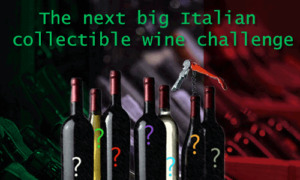Revival of Chenin Blanc grape prompts 2019 Chenin Congress
It is hard not to love wines made of the chenin blanc grape. Chenin’s versatility in style and taste appeal to many of us. Moreover, sommeliers love Chenin Blanc. Sadly, it was one of those varieties that was terribly overlooked until 20 years ago winemakers, wine experts “rediscovered” the chenin blanc. Fans of this varietal like its chameleonesque versatility, rich flavor profile, (often) high acidity and complexity.

Quiet (r)evolution
It is in chenin’s home country, France’s Loire Valley, where the qualitative (r)evolution of chenin blanc quietly got ignited. Once widely planted in Loire, chenin was largely ripped out in the 50s and 60s. Competition from other varieties, lack of consumer knowledge and chenin’s uneven ripening in certain vintages made life difficult for wine producers. Until, a new generation of winemakers demontrated that if you work hard to improve quality, chenin has a huge potential to make incredible wines.
Although chenin is in the upswing in the Loire, the new face of chenin blanc gained greater weight over the past decade in South Africa. Not surprisingly as South Africa has more chenin blanc than the rest of the world combined. In the past, chenin was deemed only good enough for brandy, blends or basic table wines. Until a decade ago a dedicated group of Cape producers elevated chenin to South African’s national grape variety. In South Africa, chenin is also known as steen.
The appeal of Chenin Blanc
What is so appealing about chenin Blanc? In truth, chenin Blanc is one of the most versatile classic grapes in existence. It can be grown in many different terroirs and produce an incredibly diverse array of wines. Similar to Riesling you can find chenin in almost any style -still, sparkling, sweet- and with all sorts of sweetness: from dry to off-dry, sweet. It can be respectively luscious, rich and ripe unwooded, but also be found in a rich and ripe wooded style.

Main characteristics of Chenin Blanc
One of its main characteristics of chenin is its high acidity potential. Chenin wines are (if well made) elegant, lively and have vibrant acidity. They are characterized by a generous bouquet of fruity (guava, citrus, apple, pear, peach, and earthy mineral) and floral aromas (acacia, hawthorn, honeysuckle). The fruity flavors (quince, pear, tart green apples, passion fruit, citrus, peach), are sometimes complemented by oak, honey, and beeswax. A high-quality chenin blanc will generally have the sensory characteristics of honeysuckle, stone fruit or tropical aromas, as well as a zesty acidity and a deep layered texture.
Chenin’s capability to create a wide range of flavors has a lot to do with the types of soil, conditions of cultivation, the winemaker’s philosophy and the style of winemaking.
Loire valley style
Chenin blanc takes on many dimensions. In the Loire Valley, local viticultural practices have created a wealth of styles in the different subregions. The wines here range from sparkling to still wines that can be dry, off- and medium dry. Usually all very enjoyable with a tingling sensation of zesty acidity. But for me, the stars of the great Loire Chenins are the “moelleux” and “liquoreux” wines of Bonnezeaux, Coteaux du Layon, Vouvray and Quarts de Chaume.
- “moelleux” means soft, smooth and mellow and has in most cases 30 to 50 grams of sugar per liter
- “liquoreux” is a rich, lusciously sweet wine, which has a sugar content larger than 50 grams per liter of wine.
New World style
And then we still have to mention all the different styles and wines produced in South Africa, Australia, the USA, India and beyond. When chenin blanc is made in a New World style, the level of acidity is lower, though the fruit flavors are much riper. The New World style chenin shows notes of guava, mango, pineapple, melon, and grapefruit, rather than citrus or green apples. It also does not age as well as France: from three up to seven years.

A revival of interest in Chenin initiated the creation of L’Academie du Chenin
The relatively quiet, quality evolution of chenin in multiple countries sparks a renewed interest in the grape variety. It also initiates the start of an ongoing revival that leads up to the establishment of Academie du Chenin in Angers, on March 6, 2017.
L’Academie du Chenin’s mission is to assemble “a worldwide network of people passionate about this grape”. Their goal is to contribute to a better knowledge of the chenin grape variety in the world and to support chenin blanc research, conservation, development, and innovation.
The 2019 Chenin Blanc International Congress in Angers, France
The Académie du Chenin organizes the 1st International Chenin Blanc Congress in Angers, on July 1, 2 and 3, 2019 with the title: chenin blanc in a changing environment. This is 1st ever conference entirely dedicated to chenin blanc. The conference is a collaboration between Destination Angers, Interloire, the Val de Loire appellations, la Fédération Viticole de l’Anjou and The South African Chenin Blanc Association and L’acdademie du Chenin. For more information visit the CBIC2019 or AcademieDuChenin.org


